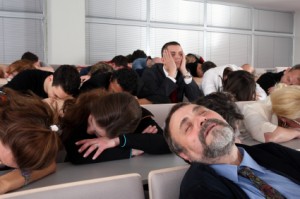I was reading some tips on planning a successful conference and thought there was one tip that was missing. Every event you run should be recorded.
It doesn’t matter whether it’s a speech, an all day seminar, a webinar, teleseminar, or a multi-day conference, why settle for only what you can get from a one time event?
If you record it, you can
- Make it available for those who couldn’t attend
- Sell the video, or create products from portions of the content
- Run the video periodically on your web site
- Offer the video, or portions thereof, as a lead generation incentive
- Transcribe the event and create reports, articles, blog posts, and audio content
- Watch the event so you can make the next one better
- License the event to other lawyers in other jurisdictions
In fact, with any content you create, whether it’s a live event or something you write on the weekends, always look for ways to get a bigger return on your time and investment. Evergreen content that you create once and use over and over again is a smart, leveraged use of your time.
Wouldn’t it be great to do the same thing with your services? No, it’s not possible with a service, but you can do the next best thing. Every time you create a form, a checklist, a template, or a script, something you can use over and over again, you are leveraging your time and increasing your return.
To earn more and work less, never settle for a one-to-one return on your time or investment.








